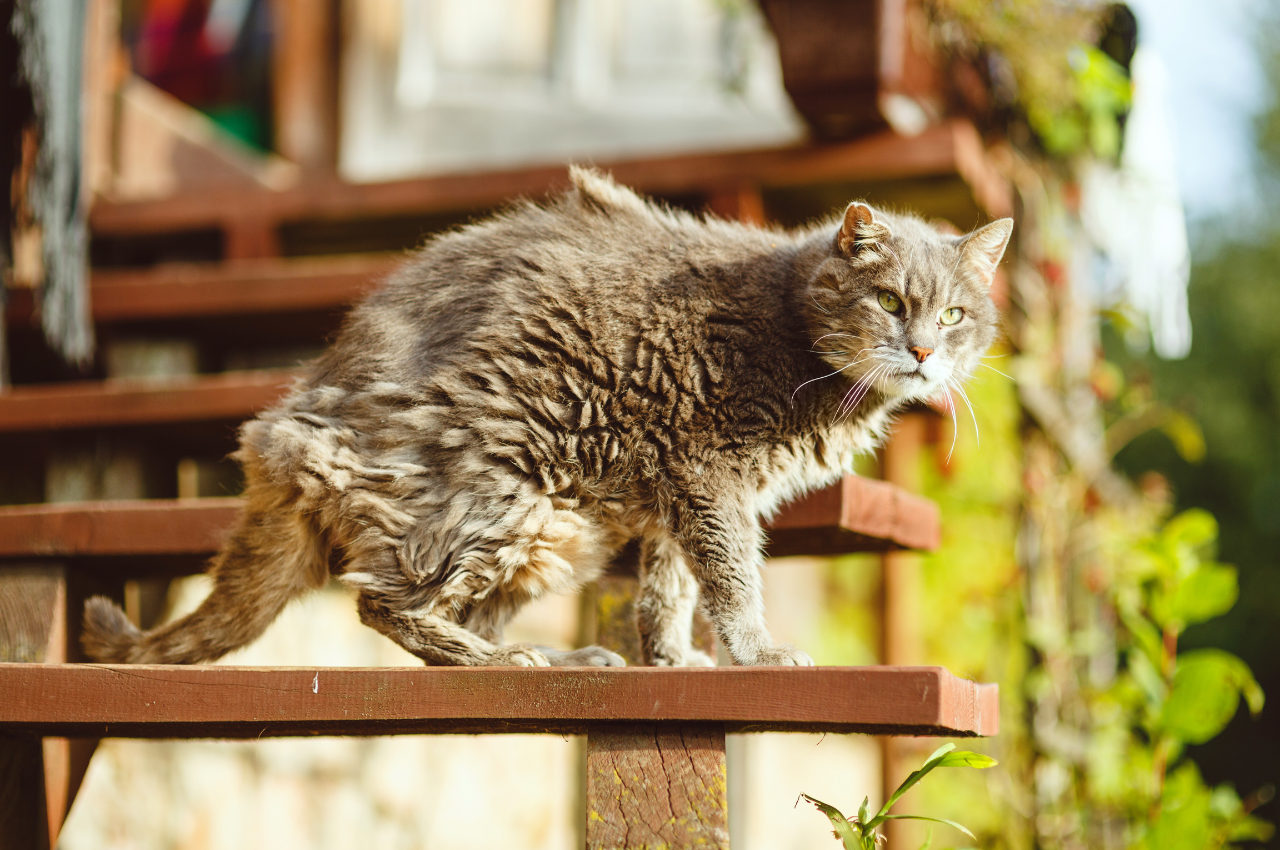To rescue an injured cat, gently approach the cat, secure it in a carrier or box, and take it to a veterinarian for immediate medical attention. Rescuing an injured cat requires careful handling and prompt medical intervention to ensure its well-being.
In this blog post, we will discuss step-by-step guidelines on how to rescue an injured cat effectively and provide it with the necessary care it needs. Whether you come across a stray cat or your own pet gets injured, knowing how to respond quickly and safely can make a significant difference in saving its life. By following these simple steps, you can be prepared to help an injured cat and ensure it receives the appropriate treatment it requires.
Introduction to Feline Emergencies
Feline emergencies can arise suddenly and require quick, informed action to ensure the well-being of your cat. Knowing how to rescue an injured cat involves several critical steps. First, assess the situation from a safe distance to determine if the cat is in immediate danger. Approach the cat calmly and cautiously to avoid startling it. If possible, gently contain the cat in a carrier or a secure box to minimize further injury.

Seek veterinary help promptly, as a professional will provide the necessary treatment for injuries or illnesses. Understanding these basic principles can significantly impact the outcome of an emergency situation and ensure your cat receives the care it needs.
Recognizing Signs of Distress
Cats, like humans, are susceptible to injury or illness. It’s crucial for pet owners to be able to recognize signs of distress in their feline companions. Some common indicators of distress in cats include labored breathing, lethargy, excessive drooling, limping, vomiting, diarrhea, and loss of appetite. If you notice any of these symptoms, it’s important to take immediate action to ensure the well-being of your furry friend.
Immediate Steps Before Action
Before taking action to help an injured cat, it’s important to assess the situation carefully. If the cat is in a dangerous location, such as near a busy road or exposed to other potential hazards, ensure that the immediate area is safe before attempting to approach the cat. Stay calm and avoid sudden movements to prevent further distress to the cat. If the cat is displaying signs of aggression or fear, it’s best to approach with caution to avoid escalating the situation.
Preparation for Rescue Operations
Preparation for rescue operations involves several critical steps to ensure the safety and effectiveness of the rescue. If you’re wondering how to rescue an injured cat, start by assessing the situation from a distance to avoid startling the cat. Ensure you have the necessary equipment, such as a cat carrier, gloves, and a first-aid kit. Approach the cat calmly and slowly, using a calming voice to avoid further stress. If the cat is trapped or injured, gently guide it into the carrier or safe space using a towel or blanket.
Once secured, seek immediate veterinary attention to address the cat’s injuries and provide appropriate care. Proper preparation and handling can make a significant difference in the successful rescue and recovery of an injured cat.
Gathering Essential Supplies
Before attempting to rescue an injured cat, it is crucial to gather essential supplies. These items include blankets, towels, gloves, a carrier, and a first aid kit. These supplies will help keep the cat warm, protect you from scratches, and provide necessary medical assistance.
Understanding Cat Behavior in Stress
When rescuing an injured cat, it’s important to understand that they may exhibit fear, aggression, or withdrawal due to stress. Be cautious and approach the cat calmly and slowly. Avoid making sudden movements or loud noises that could escalate the cat’s stress levels.
Safe Approach Techniques
When it comes to rescuing an injured cat, safe approach techniques are crucial for ensuring the well-being of both the cat and yourself. By minimizing your threat level and using calming signals, you can effectively approach the cat and provide the necessary care and assistance.
Minimizing Your Threat Level
Approach the cat slowly and quietly to avoid startling it. Make yourself appear smaller by crouching or kneeling to reduce your perceived threat. Avoid direct eye contact and keep your body language non-threatening by turning slightly to the side.
Using Calming Signals
Speak softly and use gentle, slow movements to convey a sense of calm. Avoid sudden or jerky motions that may agitate the cat further. Offer the cat a slow blink or turn your head to the side as a calming signal to reassure the cat that you are not a threat.
Assessing The Injury
When rescuing an injured cat, the first step is assessing the injury to determine the best course of action to help the feline friend.
Basic First Aid Knowledge
- Check for breathing and consciousness.
- Stop bleeding using clean cloth or bandages.
- Prevent further injury by handling gently.
When to Seek Professional Help
- If severe bleeding persists after 5 minutes.
- For difficulty breathing or signs of shock.
- In case of severe trauma or unconsciousness.
Handling and Transportation
Learn how to safely rescue an injured cat by handling and transporting them with care. Use a soft blanket to gently lift the cat, supporting their body, and place them in a secure, well-ventilated carrier for transport to the vet.

Handling and Transportation are crucial elements when rescuing an injured cat. It’s important to move the cat with care and caution to avoid further harm. In this section, we will discuss the different methods of handling and transporting an injured cat safely.
Creating a Makeshift Stretcher
One of the safest ways to transport an injured cat is by creating a makeshift stretcher. A stretcher can be made using a flat piece of board or cardboard box. First, place a blanket or towel on top of the board or box to provide cushioning for the cat. Next, gently lift the cat and place it on the stretcher. Secure the cat with the blanket or towel by wrapping it around the cat and the stretcher. Carefully lift the stretcher and transport the cat to a safe location.
Keeping The Cat Calm During Movement
It’s important to keep the cat calm during transportation to avoid any further injury or stress. One way to keep the cat calm is by speaking in a soft and soothing voice. Avoid making sudden movements or loud noises. If possible, cover the cat with a blanket or towel to provide a sense of security. Keep the stretcher level and stable to prevent the cat from sliding or falling off. When rescuing an injured cat, handling and transportation are critical elements that require careful attention.
By creating a makeshift stretcher and keeping the cat calm during movement, we can ensure a safe and successful rescue. Remember to approach the cat with caution and always seek professional help if necessary.
Professional Care and Follow up
Providing professional care and follow-up is crucial when rescuing an injured cat. It is important to approach the cat slowly and calmly, assess their injuries, and take them to a veterinarian for treatment. Follow-up care may include administering medication, changing bandages, and monitoring their progress for any signs of improvement or complications.
What to Expect at The Vet
At the vet, your injured cat will receive a thorough examination and diagnosis. The vet may recommend tests such as X-rays or blood work. Treatment options will be discussed.
Post-visit Care at Home
Following the vet visit, it’s crucial to provide a safe, quiet space for your cat. Administer medications as prescribed. Monitor eating, drinking, and litter box habits closely. Professional Care and Follow-Up Upon arrival at the vet, your cat will undergo a comprehensive examination, including potential tests like X-rays or blood work. Treatment options will be discussed with you.
Recovery and Rehabilitation
To rescue an injured cat, gently approach and wrap it in a towel for safety. Transport to a vet for immediate care and rehabilitation. Recovery involves proper treatment and patience to help the cat heal effectively.
Physical Therapy for Cats
Physical therapy is a crucial aspect of the recovery process for injured cats. A veterinarian may recommend various exercises to help the cat regain strength and mobility in the affected area. These exercises could include range of motion exercises, stretching, and massage. It is important to follow the veterinarian’s instructions carefully and to ensure that the cat is comfortable and not in pain during the physical therapy.
Emotional Support During Healing
In addition to physical therapy, injured cats also require emotional support during their healing process. Cats may experience anxiety or depression due to the trauma they have experienced. It is important to provide a safe and comfortable space for the cat to rest and recover. Spending time with the cat, offering gentle affection, and providing toys or other forms of entertainment can help to alleviate any stress or anxiety the cat may be experiencing.
Final Thoughts
Recovering from an injury can be a challenging and stressful time for both cats and their owners. However, with proper care and attention, injured cats can make a full recovery and return to their happy and healthy selves. Remember to always consult with a veterinarian and follow their recommendations for the best possible outcome.
Preventing Future Accidents
Learn how to rescue an injured cat and prevent future accidents with these simple steps. Quickly assess the cat’s condition, handle it gently, and seek immediate veterinary care to ensure a safe and speedy recovery.

Creating a Safe Environment
Creating a safe environment for your feline friend is crucial to preventing future accidents. Here are some tips to keep in mind:
- Remove hazardous items such as chemicals, sharp objects, and small toys from your cat’s reach.
- Keep all windows and doors closed or secured with screens to prevent your cat from escaping or falling.
- Invest in cat-friendly furniture such as scratching posts and cat trees to prevent your cat from climbing on potentially dangerous items.
- Ensure that your cat has access to plenty of fresh water and a clean litter box to prevent health issues.
Training for Emergency Preparedness
In addition to creating a safe environment, it’s important to be prepared for emergencies. Here are some tips for emergency preparedness training:
- Learn basic first aid techniques such as how to stop bleeding and perform CPR on your cat.
- Create an emergency kit that includes items such as bandages, antiseptic wipes, and a muzzle.
- Know the location and contact information for your nearest 24-hour emergency vet clinic.
- Practice emergency scenarios with your cat so that they are more comfortable with being handled and transported in an emergency situation.
By creating a safe environment and being prepared for emergencies, you can significantly reduce the risk of future accidents and ensure that you are able to rescue your injured cat if necessary.
Conclusion
In a nutshell, rescuing an injured cat requires immediate action, patience, and compassion. By following the steps outlined in this guide, you can provide vital assistance to a feline in distress. Remember to prioritize safety for both yourself and the cat, and seek professional help whenever necessary.
Your efforts can make a significant difference in saving a precious life. So, be prepared, stay vigilant, and be the hero these vulnerable creatures desperately need.
